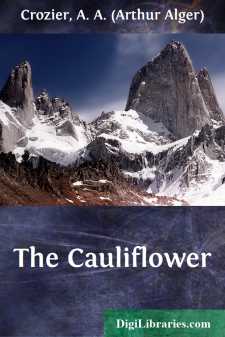Categories
- Antiques & Collectibles 13
- Architecture 36
- Art 48
- Bibles 22
- Biography & Autobiography 816
- Body, Mind & Spirit 145
- Business & Economics 28
- Children's Books 17
- Children's Fiction 14
- Computers 4
- Cooking 94
- Crafts & Hobbies 4
- Drama 346
- Education 58
- Family & Relationships 59
- Fiction 11834
- Foreign Language Study 3
- Games 19
- Gardening 17
- Health & Fitness 34
- History 1378
- House & Home 1
- Humor 147
- Juvenile Fiction 1873
- Juvenile Nonfiction 202
- Language Arts & Disciplines 89
- Law 16
- Literary Collections 686
- Literary Criticism 179
- Mathematics 13
- Medical 41
- Music 40
- Nature 179
- Non-Classifiable 1768
- Performing Arts 7
- Periodicals 1453
- Philosophy 66
- Photography 2
- Poetry 897
- Political Science 203
- Psychology 45
- Reference 154
- Religion 516
- Science 126
- Self-Help 85
- Social Science 82
- Sports & Recreation 34
- Study Aids 3
- Technology & Engineering 59
- Transportation 23
- Travel 463
- True Crime 29
Our website is made possible by displaying online advertisements to our visitors.
Please consider supporting us by disabling your ad blocker.
The Cauliflower
Categories:
Description:
Excerpt
INTRODUCTION.
The cauliflower is one of the minor vegetables which is now attracting more than ordinary attention in this country, and being grown with remarkable success and profit in a few localities which have been found to be particularly adapted to it. With most of our gardeners, however, it is still considered a very uncertain and unprofitable crop. This is due not only to the peculiar requirements of the cauliflower as to soil and climate, but also to the want of familiarity on the part of most American gardeners with modern varieties and with methods of cultivation adapted to our climate.
For a number of years, while engaged in market gardening and fruit growing in Western Michigan, the writer made a specialty of raising cauliflowers for the Grand Rapids and Chicago markets, planting from three to five acres a year. During this time most of the varieties offered by American seedsmen were tested, and the best methods of cultivation sought. On the whole, the cauliflower crop was found more profitable than any other, with the possible exception of peaches. There were partial failures, but these were due to causes which might have been foreseen and prevented. The experience gained at that time, and subsequent observation, have convinced the author that there are many parts of the country in which the climate and soil are adapted to this vegetable, but where its cultivation is yet practically unknown. The requirements for success with cauliflower will be found to be simple but imperative. A few direct experiments may be needed after one has gained the general information herein set forth, to enable one to determine whether it is best to continue or abandon its cultivation in his own locality.
I have endeavored to treat the subject in a manner adapted to the diversity of conditions found within the limits of the United States. With no vegetable is it more important to have fixed rules for one's guidance than with the cauliflower; but these rules must of necessity be of the most restricted application; in fact, they require to be adjusted to almost each individual case. So, while I have not omitted to give minute, practical directions where they seemed necessary, I have endeavored to call attention to the circumstances under which they are to be employed, and must here caution the grower against following them too implicitly under different circumstances. This remark applies particularly to the selection of varieties and the dates of planting.
Under the head of "Management of the Crop" will be found the most important information of general application, while in the chapter on "Cauliflower Regions" are given numerous records of experience from growers in all parts of the country, which will be found of special value for each locality.
Those who desire direct information on particular points will consult the index and turn at once to the paragraphs which treat of soil, culture, enemies, marketing, best varieties, etc. It is unfortunate that confusion exists in regard to some of the varieties, but it seemed best to make the list as complete as possible, even at the risk of introducing a few errors....


